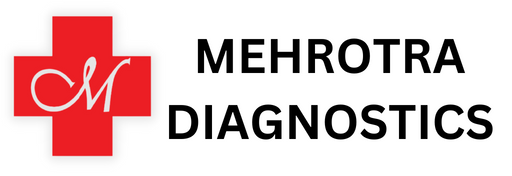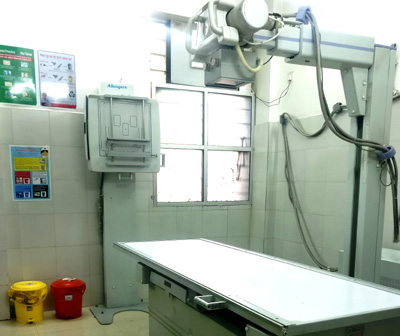Digital X-Ray
Digital X-Ray in Kanpur Digital X-Ray in KanpurDigital X-Ray in KanpurDigital X-Ray in KanpurDigital X-Ray in KanpurDigital X-Ray in KanpurDigital X-Ray in Kanpur
Digital X-Rays are electromagnetic waves similar to light but are invisible. These radiations are capable of crossing the flesh and tissues of the body human but are stopped by the bones. X-ray imaging (radiography) is a commonly used technique in radiology where an X-ray machine is used to take the images of our bodies. To create an x-ray, our body part is exposed to a very small quantity of X-rays. After X-rays pass through the tissues, they fall on films which are further processed, sensors or detectors which are connected to a computer to create an image. Traditional X-rays use films to produce images where as Digital X-rays use sensors to capture images and transfer them to computers.
Digital X-Ray is basically an imaging test that helps the doctor get the view of various parts of your body most commonly to examine the chest, abdomen, and superficial soft tissues. X-rays can identify many different conditions, and they are often a fast and easy method for your doctor to make a diagnosis. X-rays are saved digitally on computers. Digital images can be viewed on-screen within minutes. A radiologist typically views and interprets the results and sends a report to your doctor, who then explains the results to you. In an emergency, your X-ray results can be made available to your doctor in minutes.
- 80-90% reduced radiation,
- ability to take multiple exposures without repositioning the sensor,
- Easy storage, maintenance and electronic transmission of images.
- Images obtained are clearer and more accurate
- Film x-rays can display 16 to 25 shades of grey where as Digital x-rays can display over 200 different shades of grey
- The image can also be easily resized to enlarge hard-to-see potential issues without distorting or degrading the quality of the image.
Types of Digital X-rays
At Mehrotra Diagnostics, we have 2 types of Digital X-ray procedures: Routine and Specialized.
Routine Digital X-ray is an excellent diagnostic tool for the evaluation of the skeletal, chest and gastrointestinal systems. Images of different body parts are obtained as they are exposed to x-ray. The body parts include Head, Neck, Chest, Abdomen/Pelvis, Spine, Temporal Bone, Orbit and other extremities (such as wrists, hands, legs and feet).
Preparation for Routine Digital X-ray
No special instruction is required for undergoing a routine digital x-ray exam. Before going for digital x-ray:
- Please let us know if you are pregnant.
- Remove all metal instruments like watches, jewellery, hearing aids, braces from your teeth, hairpins, safety pins, metal zippers etc. to obtain clear images.
For specialized Digital X-ray tests, a contrast medium called dye such as iodine or barium is introduced into the patient’s body to obtain greater detail and better quality of the X-ray images.
- You might be asked to make dietary changes leading up to the time of the exam and follow a different process depending on the specialized X-ray procedure.
- Please to leave jewellery and with other metal objects outside so that they do not interfere with the X-ray images.
- Avoid using deodorants, body powders, or creams on the day of the appointment.
- You may be asked to change into a gown. When you have an x-ray, you may wear a lead apron to protect certain parts of your body.
- A technologist positions your body to obtain the necessary views.
- During the X-ray exposure, you remain still and hold your breath to avoid moving, which can cause the image to blur.
- You will have to drink plenty of liquid over the next 24 to 48 hours to help pass the contrast material.
Various Specialized Digital X Ray at Mehrotra Diagnostics
An intravenous pyelogram (IVP) is an x-ray examination of the kidneys, ureters and urinary bladder that uses contrast dye material injected into veins. The contrast material then collects in the kidneys, ureters and bladder, sharply defining their appearance in bright white on the x-ray images. This is very helpful in finding kidney stones and certain urinary tract disorders.
Hysterosalpingography (HSG) is the radiographic test of the uterus and fallopian tubes and is used predominantly in the evaluation of infertility. During this test, contrast medium, a dye is placed in the uterus and fallopian tubes. The dye shows up in contrast to the body structures on an X-ray screen. The dye outlines the inner size and shape of the uterus and fallopian tubes. The major indications for HSG are infertility and recurrent pregnancy loss. HSG should be done during the follicular phase of menstrual cycle, when pregnancy is unlikely.
A Micturating Cysto Urethrogram (MCU) is a radiological investigation to assess some aspects of lower urinary tract anatomy and function. MCU is done when a malfunction in the bladder is suspected, like a reverse flow of urine from the bladder to the kidneys, in outflow urinary passage like stricture, oranatomical defects like bladder diverticulum, urinary fistulas, etc.
A Retrograde Urethrogram (RGU) is an X-Ray procedure done to study the urethra which is the terminal part of the urinary passage, to look for any abnormalities. It is usually done in males. When patients have a poor urinary stream, straining to pass urine, dribbling of urine, injury to the genital region or when your Doctor suspects an abnormality of the urethra based on the other investigations like the ultrasound scanning, uroflowmetry test results.
A barium meal study is a diagnostic test used to detect abnormalities of the oesophagus, stomach and small bowel using X-ray imaging. X-rays can only highlight bone and other radio-opaque tissues and would not usually enable visualization of soft tissue. But in this study, the radiologist will be able to see size and shape of the pharynx and oesophagus and how the patient swallows. These details might not be seen on a standard X-ray.
A Fistulogram or Sinogram is an x-ray procedure to view an abnormal passage (fistula/sinus) between two or more organs. It may include a passage from inside the body, to an opening on the skin. Contrast dye is used to identify the fistula/sinus and what organs are involved.

